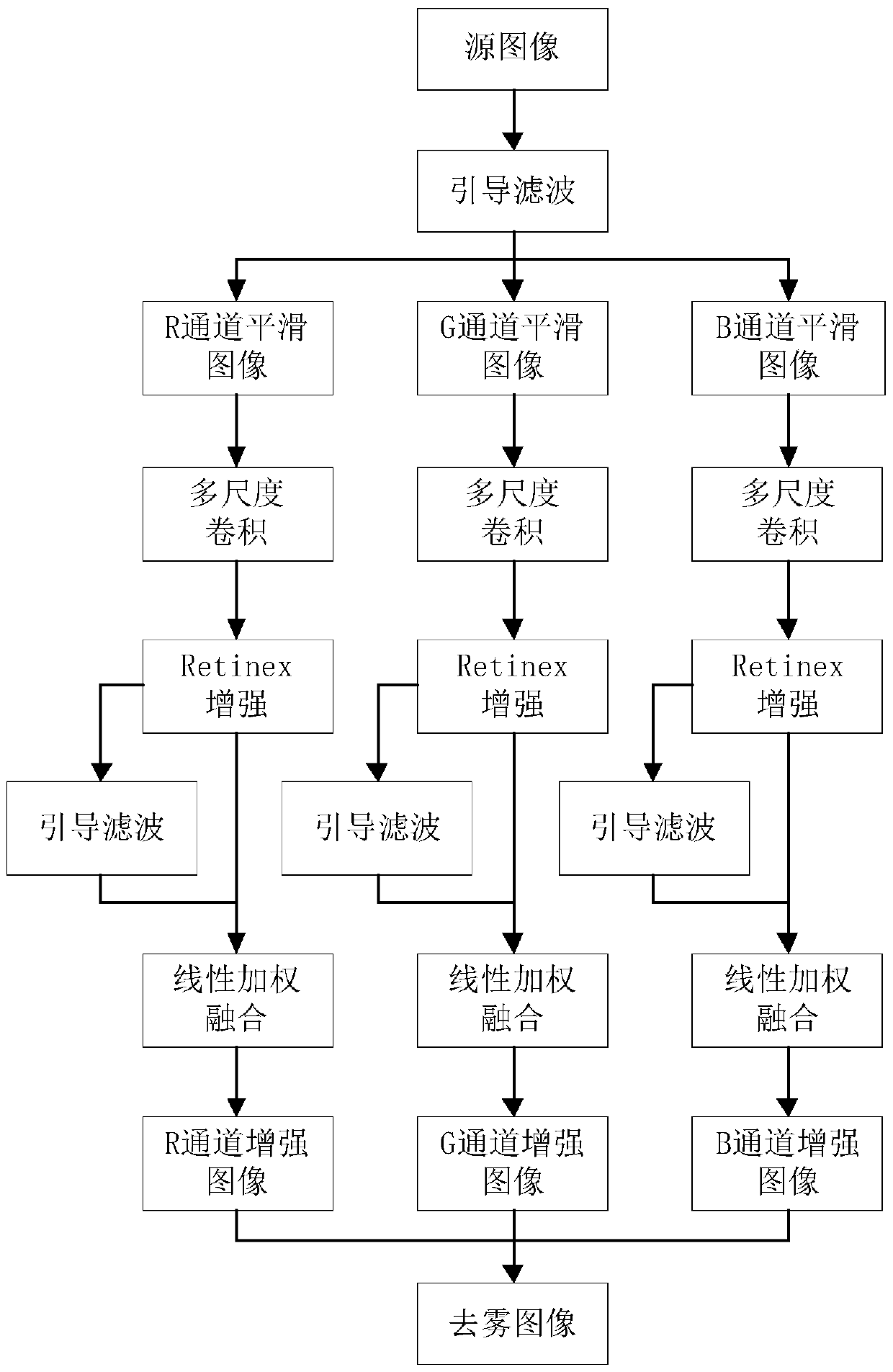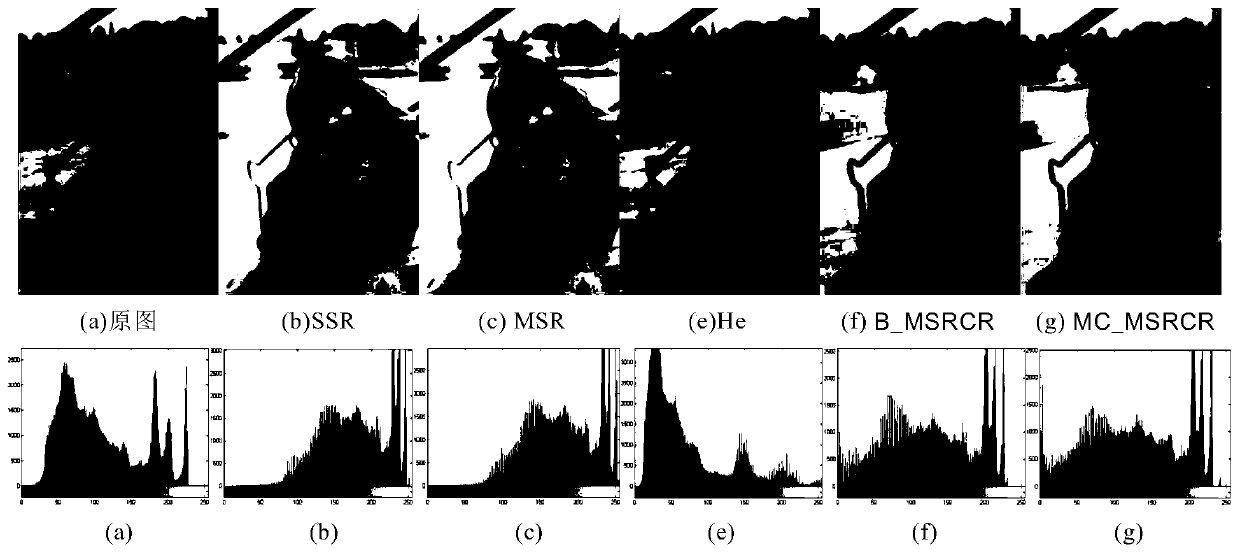MSRCR image defogging method based on multi-channel convolution
A multi-channel, image technology, applied in the field of MSRCR image dehazing based on multi-channel convolution, can solve the problems of enhancing background noise contrast, reducing useful signal contrast, difficult to balance image dynamic compression and color constant, etc., to achieve enhanced details Information and global contrast, the effect of overcoming noise
- Summary
- Abstract
- Description
- Claims
- Application Information
AI Technical Summary
Problems solved by technology
Method used
Image
Examples
Embodiment
[0084] Such as figure 2 As shown, the present invention provides a comparison chart of the defogging effect and the corresponding grayscale histogram of each algorithm with other algorithms for close-range scene dense fog images. It can be seen from the experimental effect chart that the five defogging algorithms are to a certain extent The overall contrast of the image is improved, and color distortion and halo artifacts appear in SSR and MSR; He, B_MSRCR and the present invention can effectively suppress artifacts while enhancing the contrast, while He appears to over-enhance the dark primary color. In terms of local details, the present invention effectively reduces noise and enhances local details. From the aspect of the gray scale histogram, the distribution of the gray scale value of the defogged image processed by the present invention is even and high, which is reflected on the image, that is, the dark area is enhanced, and the global contrast and detail information a...
PUM
 Login to View More
Login to View More Abstract
Description
Claims
Application Information
 Login to View More
Login to View More - R&D
- Intellectual Property
- Life Sciences
- Materials
- Tech Scout
- Unparalleled Data Quality
- Higher Quality Content
- 60% Fewer Hallucinations
Browse by: Latest US Patents, China's latest patents, Technical Efficacy Thesaurus, Application Domain, Technology Topic, Popular Technical Reports.
© 2025 PatSnap. All rights reserved.Legal|Privacy policy|Modern Slavery Act Transparency Statement|Sitemap|About US| Contact US: help@patsnap.com



